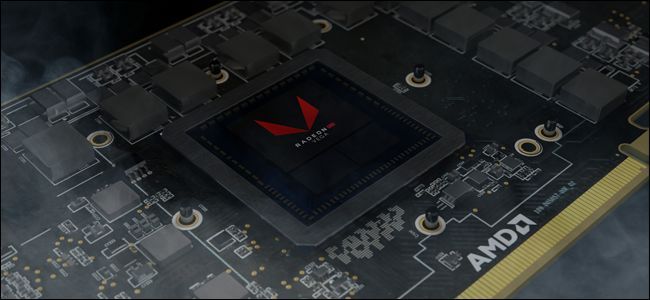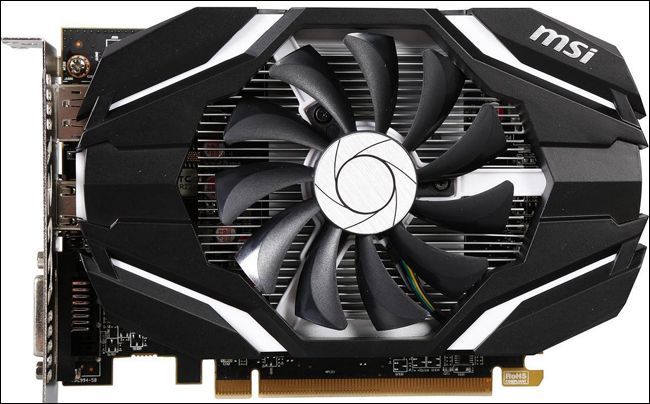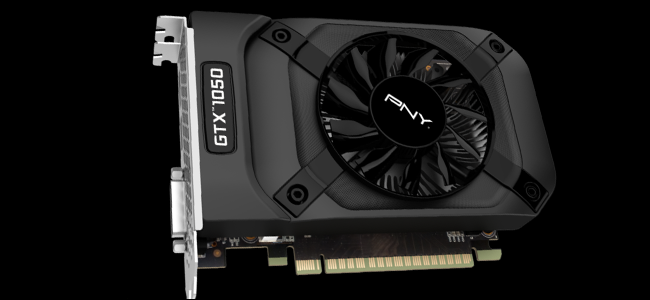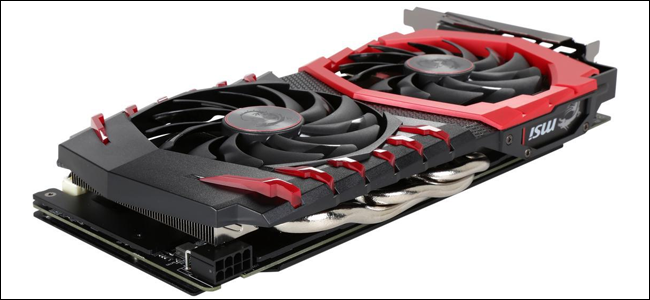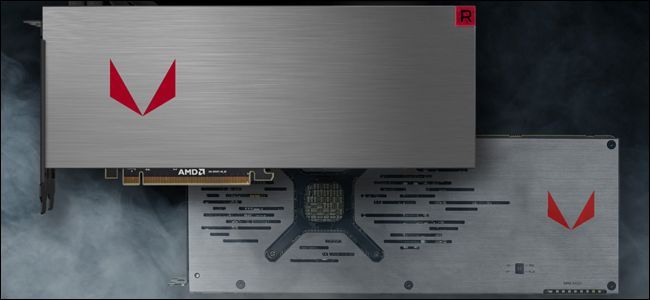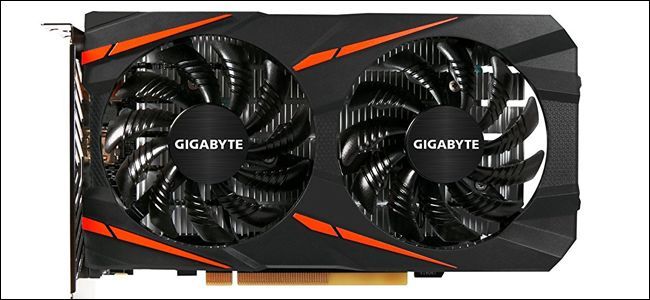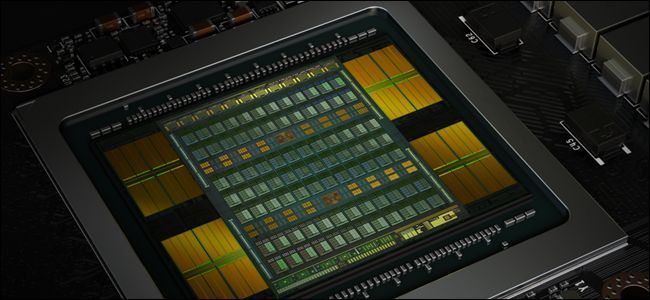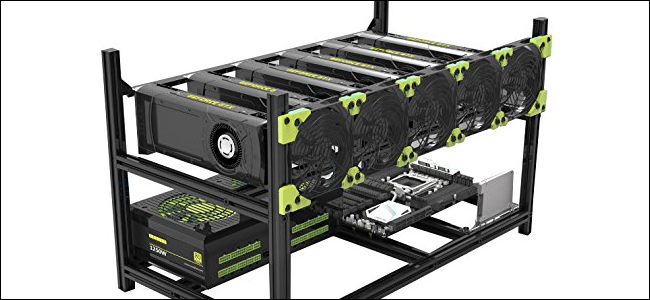Quick Links
A few years ago, people were predicting the death of PC gaming as we know it. Those people are feasting on an abundance of humble pie, as PC games remain a cornerstone of the industry: digital delivery gives us more variety than ever before, and even the relatively niche market of performance gaming hardware has never been more healthy. But even the most humble of PC gamers needs a graphics card (well, sort of), and it's one of the most frequent upgrades gamers make. But is now a good time to buy one?
Short answer: No. It's been a good while since both AMD and NVIDIA updated their graphics card lines, meaning that newer, more powerful options are just around the corner. And when those new cards arrive, current cards (which are more than adequate at all levels) should get a little cheaper. Combine that with an inflated market thanks to cryptocurrency mining, and the only cards that make sense to buy right now are low-end, entry-level GPUs for basic gaming and media.
NVIDIA GTX 900 and AMD RX 400/500 Cards Are Surprisingly Powerful
The GeForce GTX 900 series was introduced in late 2014, though NVIDIA had already been using some of its "Maxwell" class manufacturing techniques for the mid-range GTX 750 and 750 Ti cards. In addition to the usual bumps in pure speed for the processors and local memory, 900-series GPUs also expanded support for performance at higher 4K resolutions and VR applications for the HTC Vive and Oculus Rift. NVIDIA's previous-gen lineup consists of the following cards, from least expensive to most expensive and powerful, in various packages customized by OEM vendors:
- GTX 950
- GTX 960
- GTX 970
- GTX 980
- GTX 980 Ti
- GTX TITAN X
The GTX 970 is worth a particular note here: a unique design on its memory bus means that the stated 4GB memory capacity on the reference card can't all be accessed at the highest 224-bit bus speed. This lowers performance versus a similar system with high-speed access to all memory. Consumers were upset when this was discovered, and NVIDIA settled a class-action lawsuit over the matter. Nevertheless, the GTX 970 sold well and continues to be a good option for gaming builds.
The equivalent generation of AMD Radeon cards is the R 300 series, first released in late 2015. But since AMD is in a distant second place when it comes to market share, their newer cards tend to be much more competitive in price, so the newer generation is still going head-to-head with NVIDIA's older designs. The RX 400 series, first on sale in late 2016, is the logical match-up to the GTX 900, while still being cheaper at every level:
- RX 460
- RX 470
- RX 480
NVIDIA and AMD Are Fighting Hard for the High End After Vega's Release
The GTX 1000 series, first released to market in May of 2016 with the GTX 1080, adds support for new CUDA features, the DisplayPort 1.4 and HDMI 2.0b standards, support for faster memory, and a dynamic load-balancing scheduling system. The architecture series, "Pascal," is a considerable boost over Maxwell. The current lineup of desktop cards is as follows:
- GTX 1050
- GTX 1050 Ti
- GTX 1060
- GTX 1070
- GTX 1080
- GTX 1080 Ti
- GTX Titan XP
- GTX Titan V
NVIDIA-branded cards can generally be split into three categories: budget (X50 and X60), high-end (X70 and X80), and super-high end (X80 TI cards and above). Even the budget cards can handle most new games at 1080p resolution with 60 frames per second performance. Upgrading to faster and more robust cards is an option for those who want to play with extremely high visual settings, at 2K and 4K resolutions, and with demanding virtual reality headsets.
AMD's RX Vega series, newly launched in August of 2017, are a breath of fresh air offering competition to NVIDIA's GTX 1000-series cards. The new 14nm GPU design is offered in two tiers, Vega 56 and Vega 64, with a slightly more powerful Vega 64 Liquid variant equipped with a factory-installed liquid cooling loop and radiator. The three new cards are assigned MSRPs of $400, $500, and $600*, in that order.
- RX Vega 56
- RX Vega 64
- RX Vega 64 Liquid
Based on initial reviews, the Vega 56 and Vega 64 GPUs offer the toe-to-toe competition to NVIDIA's GTX 1080 and 1070 designs that AMD fans have been craving for several cycles, handily beating the older top-tier Radeon Fury cards. However, even with slightly boosted core clocks and a higher energy draw, benchmarks show that the liquid-cooled RX Vega 64 can't quite measure up to the GTX 1080 Ti. An even more powerful Vega variant, possibly reviving the Fury label, would seem to be a decent bet sometime next year as the line fills out above and below.
A step down from the GTX 1080 Ti might be an acceptable compromise for many users, since the MSRP is $150-200 cheaper on the AMD side of the fence...but AMD cards also require more power draw than their NVIDIA rivals, erasing a modest savings over two to fours years of an upgrade cycle. Some buyers might even have to get a more beefy power supply, or upgrade to a better one in a new build, just to run the Vega cards. So keep that in mind.
More importantly, with AMD now offering real competition to NVIDIA's latest cards, their prices will be inflated as manufacturers rush to get a small amount of initial units on retailer shelves. It will likely be several months before AMD will be able to meet an increased demand. NVIDIA has that long to come up with a response with a new generation of cards...which seems unlikely (see below). So instead, they'll lower prices to keep competitive with AMD. At the high end, gamers looking to save money should wait for the end last quarter of this year before making that big buy.
Update: After the latest version of this article was updated, several PC gaming enthusiast sites discovered a retailer voucher program for the initial batch of Vega-branded cards. The basic gist is that after the very limited batch of introductory cards sells out, the prices for these cards will go up by around $100 USD each, to $500, $600, and $700. This is obviously disappointing, but it doesn't change our current recommendation, since we were expecting the Vega cards to be priced higher than MSRP thanks to high demand and low chip yield.
RX 400 and 500 Series Cards Are a Great Bargain
While NVIDIA and AMD are duking it out again from $200 on up, the entry level market belongs squarely to AMD. The RX 460 and RX 550/560 cards, starting at just under $100 and going up to about the $200 mark, can generally handle new games at 1080p resolution with a few of the more exotic graphics options turned down. For budget builders looking to get a gaming machine with a rock-bottom price, they're an excellent choice.
The mid-range is a battlefield, if you'll pardon the pun, and the new AMD RX 570 and RX 580 cards are competing neck and neck with the GTX 1060 and older equivalents in terms of both price and value. Vendor modifications to reference cards, like a slight overclock or a bump in GDDR5 memory, can make the difference in a head-on battle. But whichever manufacturer you prefer, you'll find that these new cards can easily handle almost all games at 1080p and 2560p. It's a good time to be a mid-range gamer.
At this level of the market, you get a bonus: cryptocurrency miners (see below) aren't interested in relatively low-power GPUs, so prices haven't ballooned quite so much.
Cheaper NVIDIA Volta GPUs Are Still a Long Way Out
The next revision in NVIDIA's GPU architecture is codenamed "Volta," and it's generally assumed they'll be using "GTX 20X0" for the brand names (as opposed to 11X0). But with only a single server-class chip recently announced, consumer-grade gaming models are still probably four to five months away at best. The new TITAN V GPU, announced in December and selling for an incredible $3000 retail, is the only consumer-grade Volta card on the market. Expect new high-end cards in the '70 and '80 range sometime in the summer or fall of 2018.
Since those high-end cards have fairly low production yields as chip factories adapt to the new designs, you can bet those cards will be both expensive and rigid in price. It will take several months after that for current GTX 1000-series GPUs to start dropping in price, as the expensive GTX 2000 models become easier to find and the budget options his the market.
Volta will probably be a significant bump up in terms of performance at all levels, thanks to a shift to the 12-nanometer manufacturing process. With its older 14nm chips, AMD will need to hold on to its competitive pricing strategy to sell to users who want an alternative to the GTX XX80 and higher cards. When Volta arrives, gamers for whom price is no object will have newer and more extravagant options, and those hoping to save pennies will be able to pick up a Vega card for a song.
Cryptocurrency Mining Makes The Entire GPU Market More Expensive
If you haven't heard about Bitcoin and other cryptocurrencies, well, they're kind of a big deal. We don't have the expertise or interest to advice you on investing, but whatever your opinion on the new cryptocurrency market, it appears to be having an inflation effect on graphics card prices across the industry.
Bitcoin and similar blockchain-based cryptocurrency standards can benefit greatly from secondary processing via graphical processing units. That makes graphics cards a relatively cheap way to "mine" for digital coins...which in turn means that graphics cards, especially the most powerful and the most efficient, are in high demand for applications other than gaming.
High-end cards can be hard to come by at the best of times, thanks to a niche market and sometimes low yields for GPU fabrication. Now, with "miners" building PCs and sometimes even full data centers specifically for cryptocurrency mining, the demand for powerful graphics cards is higher than ever, driving up prices for gamers.
Check out this design for a "miner" rack from Amazon: it's intended for up to six full-length GPUs, a double power supply, and extra cooling fans. If each of those GPUs is at the $500-600 level, that's a $4000+ machine, all for computing cryptographic hashes... and most definitely not for playing Crysis. This is why you won't be finding any discounts on that shiny new graphics card any time soon.
The good news is that as cryptocurrency standards increase in complexity, it will become less and less economical for miners to snap up high-powered and economical cards en masse. The bad news is that interest in cryptocurrency only seems to be growing, and it might be another year or two before the bubble bursts and demand for all but the cheapest cards comes back down to a level influenced by pure gaming. So unless you're looking to build the cheapest gaming system possible, it's a really bad time to go out and actually search for deals on graphics cards.
Between the incoming next-gen cards later in 2018, a market artificially inflated by crypto mining, and developers making PC games more and more efficient at the engine level, it's a pretty bad time to be searching for a GPU upgrade or an entirely new system. That said, it's not all doom and gloom: if you're simply at the point where you want to buy or build, it won't be impossible to find the card you want. Just be aware that it's going to cost you more than it otherwise might, and you'll be behind the curve once new silicon from NVIDIA and AMD arrives.

